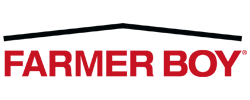How To Maintain A Pig Barn For Maximum Efficiency
Aug 17, 2021
Compared to raising other livestock animals, pigs generally require less maintenance. However, there are still many important tasks that need to be completed to keep your pig barn running efficiently.
Routine maintenance is a reality of pork production. From day-to-day tasks to quarterly and seasonal tasks, here are the things every pork producer should do to maximize the efficiency of your pig barn.
Day-To-Day Pig Barn Maintenance Tasks
There are many systems and equipment that receive daily use in a pig barn. It’s important to check these systems on a weekly, if not a daily basis. Keeping these systems running is vital for efficient pork production - both in labor, costs, and the health of livestock.
Check water lines: Inspect your watering systems for leaking water nipples, cups, and water lines. You should also clean the water lines after any medication or additives that have been run through the waterers.
Check on feeders: Just like waterers, feeders see use every day and should regularly be inspected. Check for any clogged feeder drops and feed tubes. Also be sure to check feed bins for leaks. Lastly, check that your feeders are properly adjusted.
Monitor pit levels: Keeping an eye on pit levels is important for both health and safety. Be sure there is enough freeboard space underneath the barn’s slats. There should always be enough space to prevent spray when washing through the slats.
Monthly Maintenance Tasks
Not everything needs to be inspected on a daily basis; some tasks are better suited as part of a monthly routine. However, this doesn’t make them any less important. In fact, your monthly maintenance routine often impacts the day-to-day tasks of operating a pig barn. Be sure you check these items off your list each month!
Run heaters and cooling systems: Once monthly run your hog barn’s heating or cooling system, whichever is not in regular use during that time of the year. This helps to ensure they’re working, prolongs their life, and prevents pest infestation.
Inspect the outside of the barn: This is a simple task, but one that is easy to overlook when handling other production tasks. At least once a month, walk or drive around the perimeter of your hog barn. Be sure to keep grass mowed low, clear any trash or debris, and check insulation, vents, and walls for pest access points.
Check lighting equipment: Your barn’s lighting system plays an important role in everything from the health and safety of your animals to their mood and disposition. Given its importance, you should make it a monthly task to check light fixtures, switches, and controls for signs of wear or damage. It may be difficult to check every fixture in a large barn, so consider dividing the barn in sections. Alternate checking the lighting in individual sections each month.
Seasonal Maintenance Tips
Some maintenance tasks make the most sense when preparing your pig barn for a change in seasonal climate. Before entering the winter or summer seasons, be sure to add these items to your to-do list.
Inspect and clean cooling pads: If you use evaporative cooling pads in your hog barn, inspect them at the beginning and the end of the summer season. Look for signs of algae, mildew, or nutrient growth and build-up. Be sure to use the proper cleaning equipment and replace pads if necessary.
Check your barn heaters: Conversely,when both entering and leaving the winter season, take time to inspect your barn’s heating system. Check vents, fixtures for heat lamps, and all thermostats and controllers. Be sure to have any necessary repair parts on hand so maintenance can be performed quickly and efficiently.
Winter and summer weatherizing: Before you’re already in the middle of the cold or hot seasons, inspect all vents, inlets, and fans. In the winter, be sure these are properly closed and covered to prevent cold drafts and trap heat. In the summer, remove debris, clean the fans, and check that all fans, inlet shutters, and vents are working as they should.
Check slats and mats: Concrete slats sustain wear and tear over time. It’s important to check your barn’s slats at least once a year, or between major seasons. Rubber mats are often used to help protect slats and extend their lifespan. Be sure to check mats seasonally. Damaged mats can pose a safety risk to hogs and aren’t helping to protect the flooring underneath.
Keep Your Hog Barn Maintained With Farmer Boy
Hog barns require many systems to run smoothly - from lighting to climate controls. The top tip for ensuring an efficient maintenance routine is to make sure you have the parts you need when you need them.
Farmer Boy has everything you need to operate a successful hog farm. Shop our swine supplies for all the parts and items you need. If you need help with a custom order or have product questions, give our sales team a call at 1-800-845-3374 for assistance!


